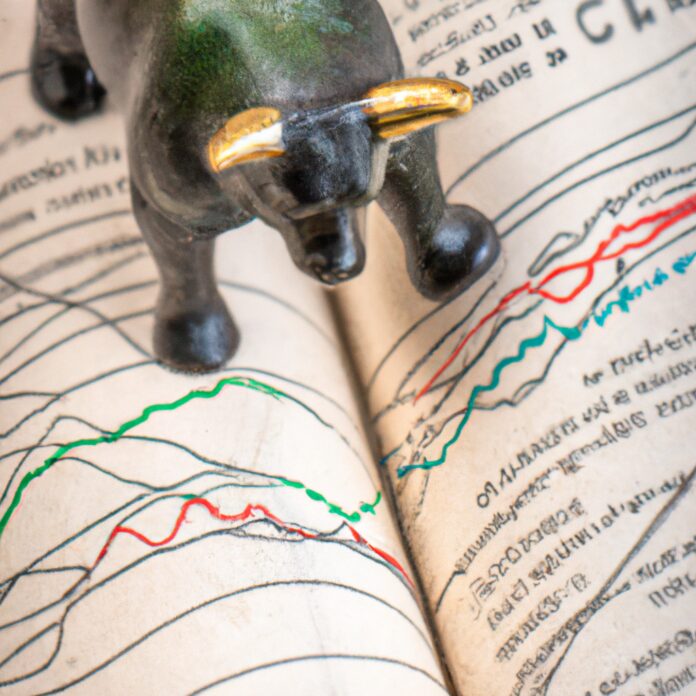When it comes to making smart financial decisions, the stakes are high. The savvy investor wants to read all the signals the market is sending and make informed decisions that will lead to profitable trading. That’s why it’s important to know if it’s time to be a bull or a bear if you want to make the best decisions for your portfolio. In this article, we’ll explore how to read market signals and make the informed decisions necessary for success in the stock market.
1. Analyzing the Bull & Bear: Decoding Market Trends
Investments in bull and bear markets can be intimidating, especially if you’re a first timer. Understanding the characteristics and trends between stocks, bonds, and other assets can seem daunting without the proper guidance. However, by breaking apart the fundamentals of the market, you can get the guidance you need to start assessing securities and seeing better returns.
Separate Long-Term and Short-Term Trends
Analyzing the bull and bear of the market requires recognizing when the shifts occur. It’s important to note the distinction between Long-Term and Short-Term trends. For instance, Long-Term trends find signal by trailing historical averages. This type of trend can take six months or longer to develop, and is reflected in the considerable change in pricing. On the other hand, analyzing short-term trends relies heavily on predicting market behavior. These trends require analysts to use more technical analysis, reading candlestick charts to extrapolate upcoming patterns.
Know When to Buy and Sell
Once you’ve established the type of trend, a fitful investor’s goal is to be prepared to buy and sell at the right times. Decoding the bull and bear of the markets requires staying up to date with news sources and stock tickers.One of the best methods of deciphering this is using a combination of fundamental and technical analyses. Fundamental analysis is about understanding the company or asset you’re investing in, gauging the degree of risk and reward the investment could yield. Whereas, technical analysis is about observing the data and trying to make a prediction as to where the stock will go next. As a rule of thumb, it’s a better approach to buy stocks when prices are low and to cash out while they’re high.
Look For Signs of the Bottom
Putting the bull and bear analysis into action requires timing the entrance and exit of the market. Risky investors are at their peak during strong bear markets. When the market goes south, these investors feel they can take advantage of the low prices. They buy with the hopes that when the bottom hits, they can reap massive returns. Assets at their low are typically in a contracting stage, signifying the potential of a skyrocketing future. Investors need to be on their toes for impending news, which is the catalyst for the test of the bottom. It’s incredibly risky to keep holding after that point as the stock can spiral downward quickly.
2. How to Tell When to Buy & Sell
When trading in the financial markets, deciding when to buy and when to sell can make all the difference. To ensure success in the markets, proper timing is key. Here are a few tips to help you decide when to buy and sell your investments.
- Know Your Timeframes: Timing is everything. Short-term traders should take shorter timeframes into consideration when determining when to buy and sell. Longer-term traders should factor in the overall trends of the market to decide when to buy and sell.
- Consider the Market Conditions: Before buying and selling, it’s important to assess the overall market conditions. Evaluate both current and historical data to gain an understanding of the overall market’s behavior.
- Look For Low Risk, High Reward Opportunities: When analyzing the markets, look for low risk, high reward opportunities. Analyzing risk/reward ratios can help determine when the best time to execute your trades; this will help reduce risk and maximise trading rewards.
- Diversify Your Portfolio: A diversified portfolio can help spread out the risk of each individual investment. This improved portfolio management strategy can help determine when to buy and sell, which will help you minimise risk and maximise potential gains.
- Be Reasonable: Don’t let your emotions dictate when to buy ad sell. When in doubt, take a step back, reassess the situation and exercise caution. Panic selling can mean a serious loss of potential rewards, so take the time to think before you take action.
In conclusion, timing is a critical element when trading in the financial markets. By following these tips and taking the time to analyse the market conditions carefully, you can increase your chances of successfully determining when to buy and sell.
3. Utilizing Market Signals to Make Smart Decisions
As markets fluctuate and change, it’s important to stay abreast of the latest information and analyze it before making any major decisions. Using market signals to make smart decisions is one of the best ways to protect your investments and ensure your portfolio is growing. Here are a few tips for utilizing market signals to make informed decisions:
1. Monitor Changes in the Market
It’s essential to monitor the market regularly. Pay attention to factors like stock prices, exchange rates, and various other indicators. Understanding the signals will give you insight into how the market is performing and what decisions you may need to make.
2. Invest When Necessary
In some cases, it’s best to invest when a particular signal indicates that the market is set for growth. Keep tabs on research and news relevant to the markets and use market signals to make decisions on when to invest. This can help protect your investments and allow them to benefit from a potential market upswing.
3. Take Action Quickly
Once you receive market signals, you need to react quickly and efficiently to get the most out of them. Analyze the signal data and be prepared to take action in an informed manner. This can help ensure that you protect your portfolio and take advantage of market opportunities.
4. Stay Updated
Finally, it’s important to stay on top of changes in the market. Find reliable sources online such as news sites or financial information services to keep up with the latest trend analysis and insider knowledge. With this knowledge, you can make smarter decisions when making investments.
4. Riding the Wave: The Benefits of Investing in Fluctuating Markets
It’s no secret that market fluctuations can be unnerving, particularly for those who don’t have a full understanding of the risks and rewards associated with investing. But for those who have the knowledge and foresight to see the bigger picture, riding the wave of market volatility can present some excellent opportunities.
Understanding Volatility
Though often viewed with trepidation, different types of market volatility are not always indicative of negative trends. Short-term and long-term fluctuations can both be sources of potential financial growth, especially when investors are able to stay ahead of the curve. Understanding these markets, as well as the various types of trades and strategic investments that may be used to capitalize on them, is crucial.
Timing Is Everything
The key to making a success of investing in fluctuating markets is timing. Knowing when to buy and sell shares or assets based on current conditions can be make or break for any venture. After crunching the numbers, setting a course of action for each market and sticking to a strict plan can help a savvy investor capitalize on the situation.
The Benefits of Investing in Volatile Markets
- The potential for higher returns
- The ability to learn more about market cycles
- The prospect of taking advantage of short-term trends
- More opportunities to diversify an investment portfolio
Though risky, investing in fluctuating markets can be a great way to leverage and grow capital. By keeping ahead of the game, researching the markets and understanding timing and trends, savvy investors can make the most of these shifting cycles and benefit from the rewards.
When it comes to reading the market and making informed decisions on investing, it pays to know whether the market is on a Bull or Bear run. Knowing the signs and understanding the market environment can help to minimize risk and maximize returns. So, arm yourself with the right market knowledge and let your investments grow!



